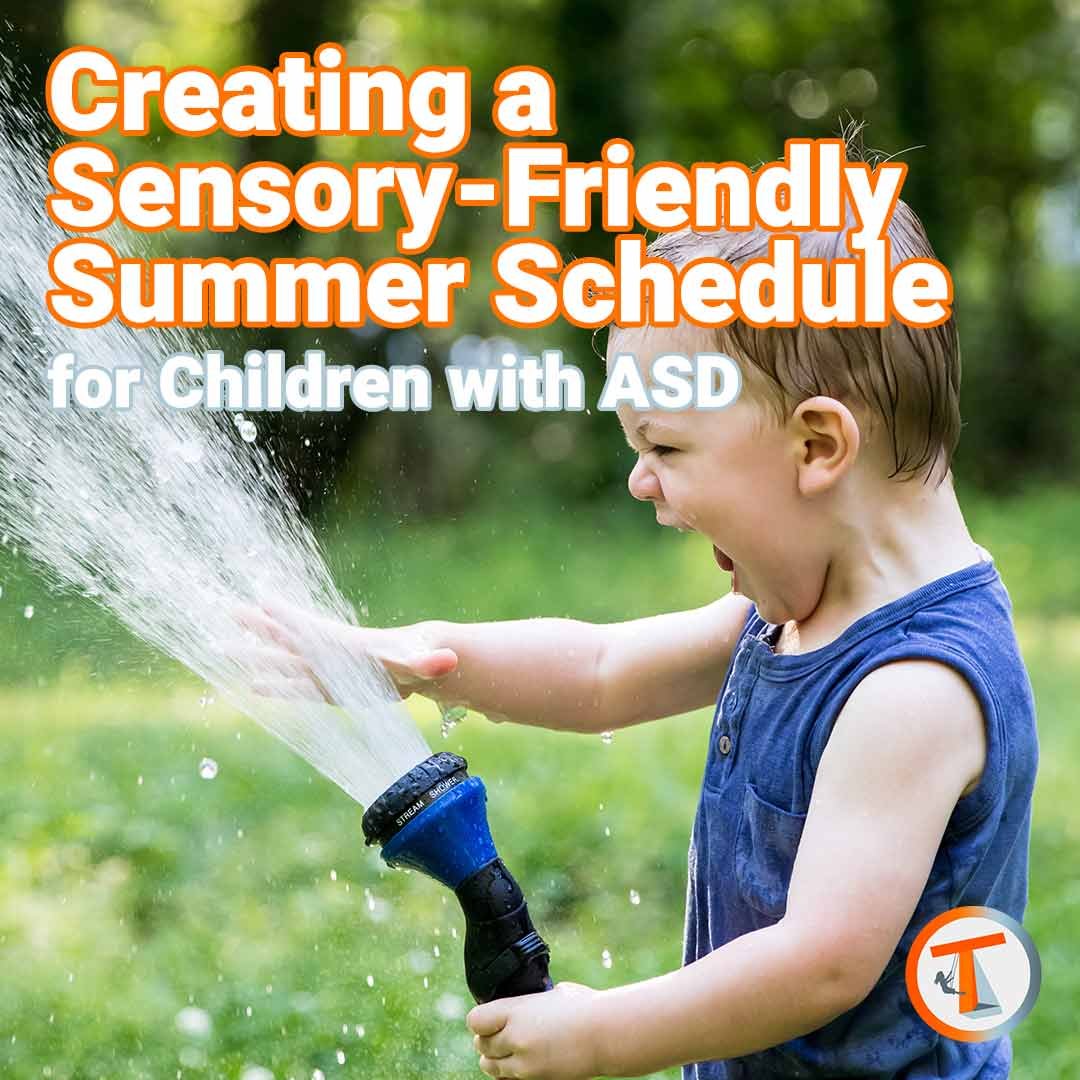Tips for Creating a Sensory-Friendly Summer Schedule for Children with Autism
Summer can be an exciting time for children with autism as it provides a break from school and an opportunity to engage in fun activities. However, the sudden change in routine and sensory overload can often lead to stress and anxiety for children with autism spectrum disorder. To help make the transition smoother, you can create a sensory-friendly summer schedule. Here are some therapist-approved tips to help you get started:
Keep a Consistent Routine
Children with ASD thrive on routine and consistency, so it's important to maintain a similar schedule throughout the summer. This can include waking up and going to bed at the same time each day, having set times for meals and snacks, and scheduling activities at predictable times. Having a visual schedule that outlines the daily routine can be helpful, as it clearly explains what will happen each day.
Take Breaks
Taking breaks throughout the day gives your child time to decompress and regulate sensory input. This can be as simple as taking a quiet moment in a designated safe space or engaging in a calming activity such as deep breathing or yoga.
Incorporate Sensory-Friendly Activities
The summer season allows for a wide range of outdoor activities that can be enjoyed by everyone, including children with ASD. One way to ensure it is fun and sensory-friendly is to consider the sensory input of each activity and how it may affect your child. For example, some children may be overwhelmed by loud noises, bright lights, or strong smells. To accommodate these sensitivities, consider engaging in activities such as swimming, hiking, or visiting a quiet park. You can also incorporate sensory-friendly activities such as playing with sand or water, blowing bubbles, or engaging in arts and crafts.
Consider Technology
Technology can be a helpful tool for children with ASD to regulate their sensory input. Consider using noise-canceling headphones, weighted blankets, or calming apps to help your child stay calm and focused.
Plan for Outings
If you plan on taking your child on outings, it can be very beneficial to prepare in advance. This can include researching the location to determine if it's sensory-friendly, bringing along noise-canceling headphones or sunglasses, and having a plan in case your child becomes overwhelmed. It can also be helpful in some cases to have a visual schedule that outlines the outing, so your child knows what to expect.
Involve Your Child in Planning
Involving your child in the planning process can help them feel more in control and invested in the summer schedule. You can work together to create the visual schedule or brainstorm sensory-friendly activities that your child would enjoy.
Provide a Safe Space
It's essential to have a designated safe space for your child when they become overwhelmed or overstimulated. This can be a quiet room or area in your home, where your child can decompress and regulate sensory input. It's also crucial to remember to communicate with your child about this space and ensure they understand that they have a safe and calming environment.
Incorporate Therapeutic Activities
Summer can also be a great time to work on new therapeutic activities within your child's schedule. This can include occupational therapy, speech therapy, or getting involved in different groups to enhance social skills. These activities can provide a structured environment for your child to work on specific skills, while also providing an opportunity for social interaction with peers.
Use Social Stories
Social stories are a great tool for children with ASD to help them understand new situations and routines. You can create social stories specifically for summer activities and outings, which can help your child prepare and have a better grasp on the expectations.
Be Flexible
While it's important to maintain a consistent routine, it's also important to be flexible and adapt to your child's needs. If your child is feeling overwhelmed or overstimulated, it's okay to modify the schedule or activity to accommodate their needs.
Get new ideas for activities and games you can play at home this summer! Our app is designed to allow you to find things to do based on a particular focus for development or aim toward occupational, physical, or speech therapy. Find ideas for kids to play indoors or outdoors, find printable worksheets, game instructions, and so much more.
Creating a sensory-friendly summer schedule for children with ASD can help reduce stress and anxiety while providing opportunities for fun and engaging activities. By keeping a consistent routine, incorporating sensory-friendly activities, planning for outings, providing a safe space, and incorporating therapeutic activities, you can help your child have a successful and enjoyable summer. There are so many new ideas you can incorporate into your routine that can enhance your child’s development while also providing exciting and fun things to do to keep everyone engaged and entertained.
Related Resources
Summer Activity List: https://tiltonstherapyfortots.com/resources/summer-activity-list
Summer Water Balloon Fun: https://tiltonstherapyfortots.com/resources/summertime-water-balloons
Sensory-Friendly Home Modifications: https://tiltonstherapyfortots.com/resources/sensory-friendly-home-modifications
Autism Awareness: https://tiltonstherapyfortots.com/resources/autism-awareness
Additional Resources
https://www.autismspeaks.org/tool-kit/summertime
https://nationalautismassociation.org/preparing-for-summer/
https://blog.theautismsite.greatergood.com/sensory-friendly-summer-schedule/

